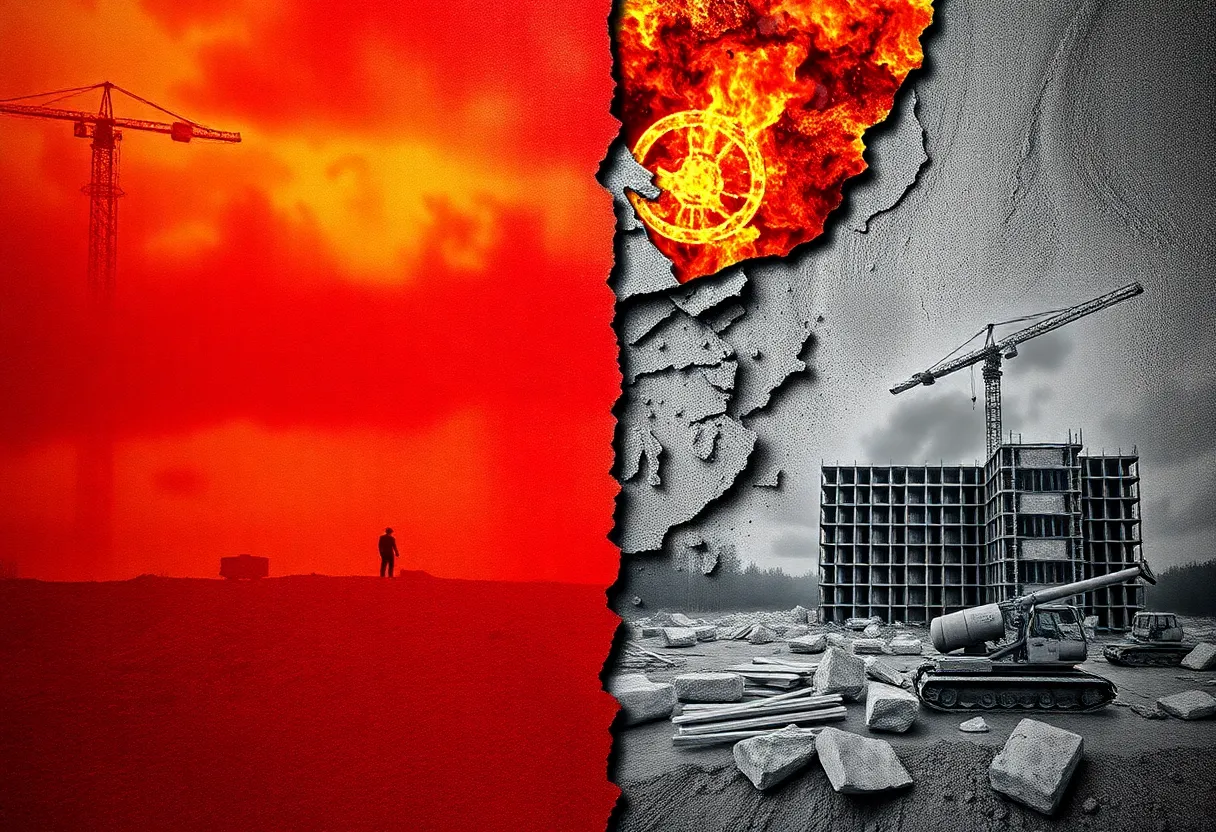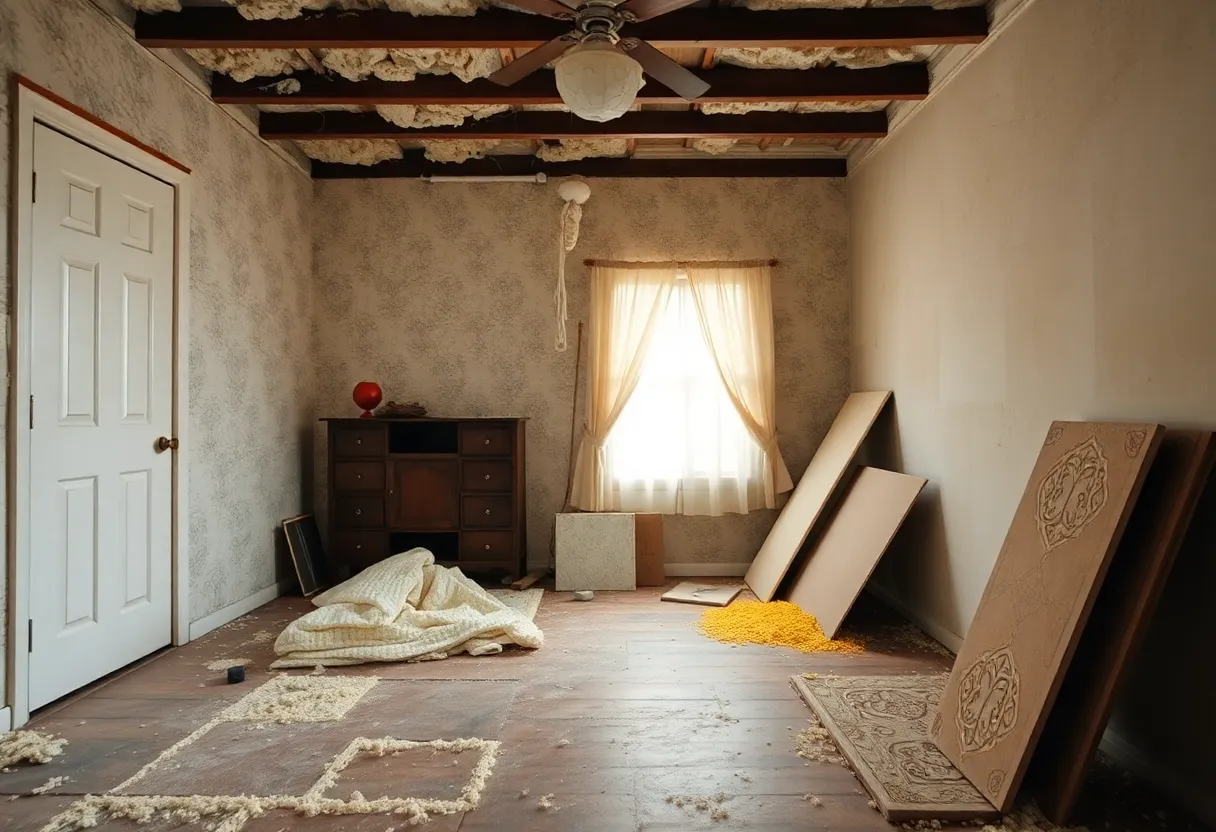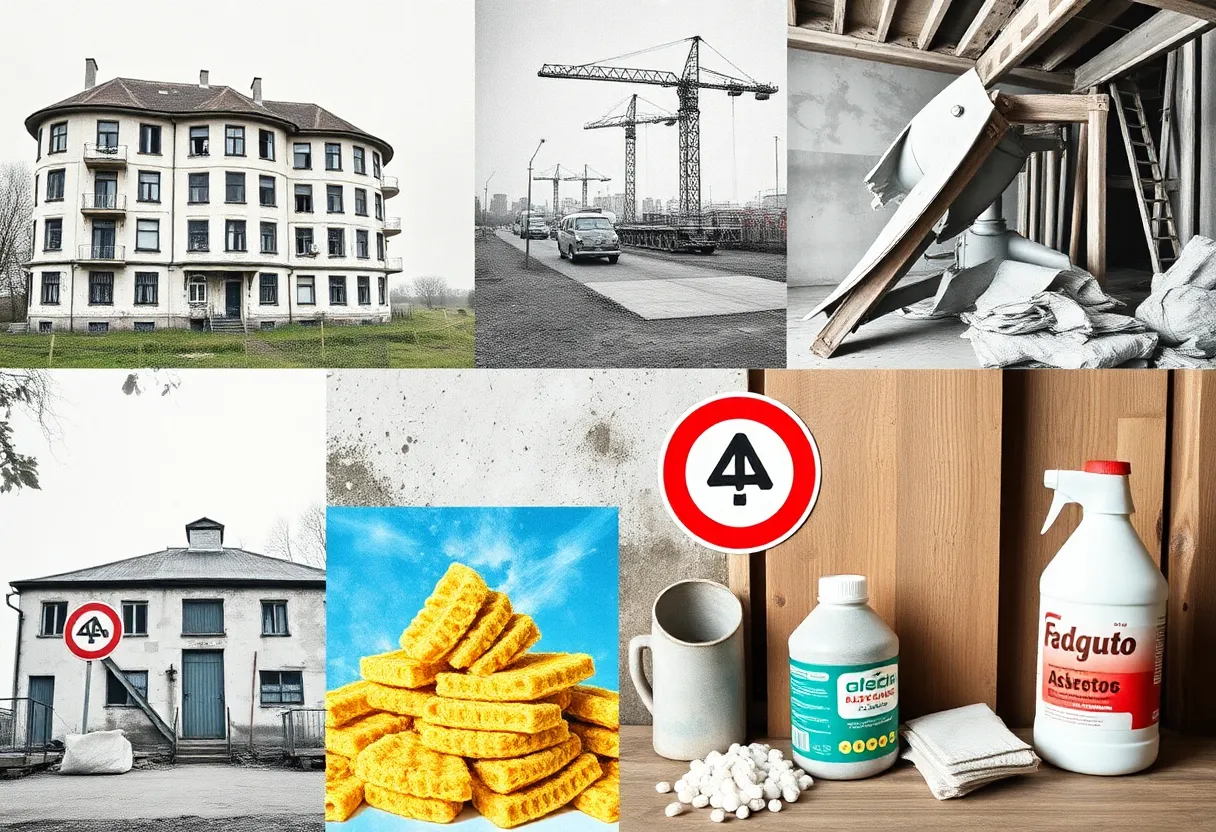News Summary
Explore the health risks associated with asbestos exposure and the ongoing regulatory challenges as public advocacy intensifies for comprehensive safety measures.
The Looming Shadow of Asbestos: Health Risks and Regulatory Challenges
Asbestos, a hazardous material long celebrated for its fire-resistant and insulating properties, has a storied past that dates back to ancient civilizations. Evidence of its usage can be traced as far back as 2500 BC, where it was found in pottery and textiles. Throughout history, its desirable characteristics made it a staple material during the Industrial Revolution, particularly in boilers and steam engines. However, this once-revered mineral has turned into a significant health crisis, with its dark legacy continuing to impact thousands of lives.
A Deadly Link: Asbestos and Mesothelioma
The danger of asbestos became apparent when the inhalation of its dust began causing severe health issues, including mesothelioma, a rare but aggressive cancer primarily affecting the lungs. Inflammation and scarring of lung tissue were observed as early as ancient Rome, yet the intricate relationship between asbestos exposure and these health risks remained largely unrecognized until the 20th century. Estimations suggest that about 40,000 deaths annually in the United States can be attributed to asbestos-related diseases, with public health experts noting that there is no safe level of exposure.
The Hidden Dangers: Chrysotile Asbestos
Despite growing awareness, regulatory measures surrounding asbestos have been complex. While the majority of asbestos usage declined significantly after the 1970s as overwhelming evidence linked it to severe health problems, certain types of asbestos, particularly chrysotile asbestos, commonly known as white asbestos, continue to be part of various products, notably in brake pads and gaskets. The Environmental Protection Agency (EPA) moved to ban all industrial uses of asbestos in March 2024, but lingering questions about the comprehensiveness of this ban remain.
Political Battles and Health Compromises
The regulatory landscape currently is under scrutiny, particularly after the EPA’s announcement on June 17, 2024, to revisit the Biden-era ban targeting chrysotile asbestos. This decision emerged amidst concern from the American Chemistry Council regarding potential impacts on the supply chain. As discussions evolve, former EPA officials have also indicated that alternative measures may be on the table, raising alarm among health advocates already frustrated by the potential easing of restrictions.
The Persistent Perils of Asbestos Exposure
Adding fuel to the fire, public figures have controversially downplayed the risks associated with asbestos. Misleading claims asserting that the mineral is “100 percent safe” echo pessimistically through public discourse, undermining the efforts of health advocates. It is crucial to remember that every 13 minutes, someone succumbs to an asbestos-related disease, demonstrating the urgent need for robust public health protections. Unquestionably, the Asbestos Disease Awareness Organization lights a beacon on this escalating crisis, lingering as a reminder of the lives lost to preventable exposure.
Revisiting Safety Standards: A Step Back?
With chrysotile asbestos being the only type actively used in the United States, the reconsideration of its ban could result in a significant setback in the fight against this harmful carcinogen. The regulatory review might extend up to 30 months, causing delays in enforcement and potentially lengthening the exposure risks for workers and communities. The historical tightening of asbestos regulations since the 1970s, including a notable update to the Toxic Substances Control Act in 2016, is now at risk of loosening the reins.
The Continuing Battle Against Asbestos
The abyss of asbestos continues to haunt our society as advocates rally against these recent developments. Despite overwhelming scientific consensus on the dangers of asbestos, the challenges in public policy and regulatory frameworks remain daunting. As society strives for comprehensive safety measures, the enormity of the asbestos crisis demands unwavering attention and action. Continuously assessing the implications of regulatory changes will be critical to safeguarding public health and ensuring that history does not repeat itself.
Deeper Dive: News & Info About This Topic
HERE Resources
Chrysotile Asbestos Ban Faces Uncertain Future Under Trump Administration
New Study Reveals Asbestos Exposure Thresholds Linked to Mesothelioma Risk
Philadelphia School District Enters Asbestos Management Agreement to Avoid Prosecution
Philadelphia School District Under Fire for Asbestos Management
Philadelphia School District Faces Criminal Charges Over Asbestos Mismanagement
Philadelphia Schools Under Pressure to Address Asbestos Issues
Chrysotile Asbestos Ban Under Fire: A Dangerous Game of Reconsideration
Judicial Ruling Pauses Auction of CARD Assets Amid Legal Turmoil
An Asbestos Dilemma: Mecklenburg County vs. Peebles Corporation in Brooklyn Village Project
Philadelphia School District Faces Federal Charges Over Asbestos Violations



















